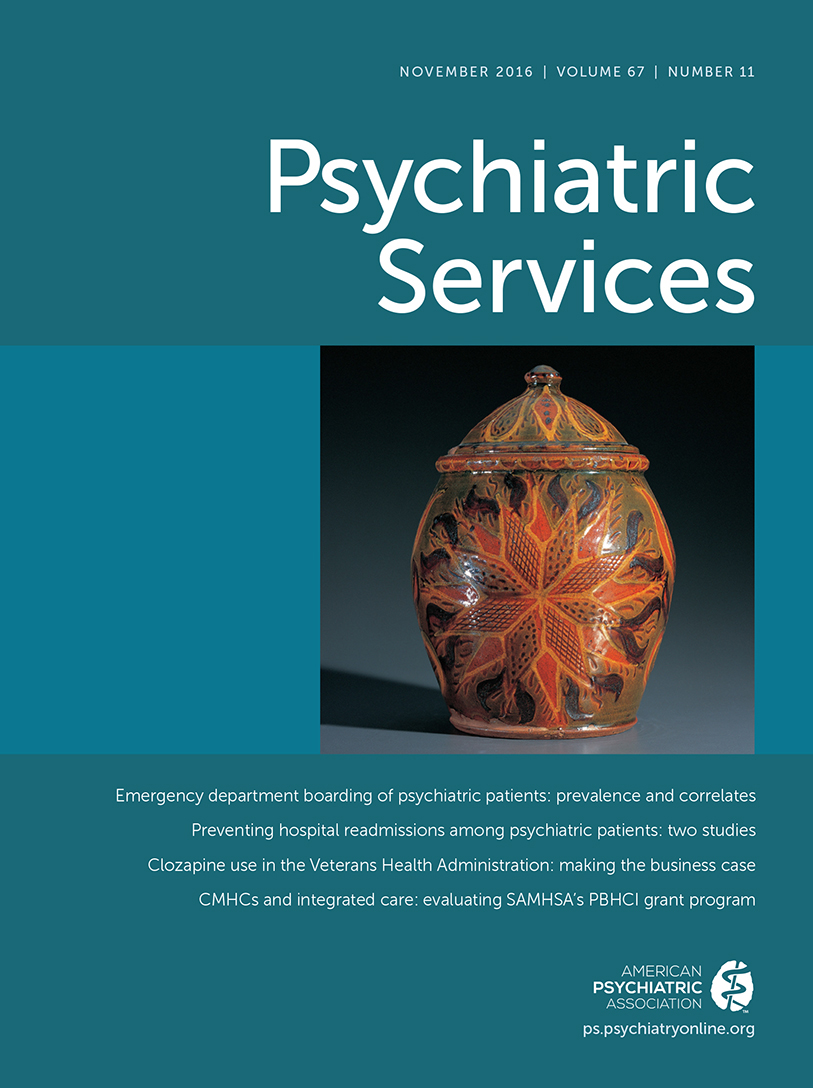Emergency Department Boarding: Nowhere Else to Go
This month’s study by Smith and colleagues of the characteristics of patients boarded in Florida emergency departments (EDs) lends additional insight into the growing scourge of patients with severe mental illness stacking up in general hospital EDs. Smith and colleagues document the long stays of these patients and the not surprising finding that the poorest and sickest languish with vanishingly few realistic alternatives to ED boarding.
This problem is well documented throughout the country as we confront the cumulative loss of state and general psychiatric bed capacity. The first blow was the depopulation of state hospitals, with the ostensible intent to grow Medicaid-eligible services. The second was the closing of nonstate psychiatric beds in the wake of overzealous behavioral health managed care utilization review procedures. The third blow was the failure of most states to maintain anything approximating adequate behavioral health funding. Bed shortages and resultant ED boarding is the canary in the coal mine. Indeed, the situation has become so worrisome that courts in Washington State recently held the state's legislature hostage until it funded new beds to halt the egregious practice of involuntarily committing patients to ED gurneys.
But not everyone agrees that bed shortages are the problem. The recent call to “bring back the asylum” in the pages of JAMA by Sisti and colleagues was met by a torrent of criticism and raised fears of a return to institutionalization and a deflection of pressure to build community services. Leona Bachrach, a deinstitutionalization scholar, some decades ago wrote that in planning for services for persons with severe mental illness, one should think of developing “functionally equivalent” services—for example, the need for inpatient beds might be partly met by a well-designed crisis residence. As helpful as this framework is, it also introduces the challenge of estimating bed need in a dynamic system of patient flows in and out of beds and services. How can such a complex system best be evaluated to estimate bed need or its equivalent? How might the addition of supportive housing units served by assertive community services or a crisis response team affect bed needs in a region?
Policy makers pose the question, How many beds do we need? “It depends” is a most unsatisfying response. Policy makers want a number. The Treatment Advocacy Center recently published estimates of state hospital bed needs, noting that in 1955, before deinstitutionalization, the nation was served by roughly 337 state beds per 100,000 persons and that by 2016 there were fewer than 12 beds per 100,000 persons. The center’s experts estimated a need for approximately 50 beds per 100,000 persons, which means that we currently have a nationwide deficit of more than 90,000 state hospital beds. However, this politically unattainable estimate does not account for nonstate beds, nor do we know how functionally equivalent services might affect these estimates.
What are other approaches to these estimates that could usefully inform policy makers about bed needs in a region? An alternative dynamic approach for estimating bed need uses ED wait times as a practical metric. In fact, in at least one state, North Carolina, ED boarding times are used as a key crisis capacity metric and can also generate useful estimates of bed need. In the May 2016 issue of Psychiatric Services, La and colleagues used simulation modeling to demonstrate the utility of such an approach. They studied the flow of nonforensic patients in the North Central region of North Carolina into adult admissions units of a regional state hospital. They estimated that at baseline state bed capacity, the average patient in the region would wait 3.3 days in an ED to gain admission to the state hospital. Further, they estimated that to reduce boarding times below 24 hours, the state would have to roughly double adult admissions beds serving the region by adding roughly 350 beds. Policy makers could deploy ED wait times as a straightforward metric for system adequacy and bed need. If, for example, ED boarding times of 24 hours are an acceptable upper limit, the need for adding beds or their functional equivalent can be clearly quantified.
One challenge to accountability in the postinstitutional era is that deinstitutionalization scattered persons with severe mental illness to enormously diverse mental health, criminal justice, and human service settings where their needs are difficult to quantify. ED boarding is a simple metric on which we can focus.




